HBO’s Chernobyl - Nuclear energy finally takes the stand
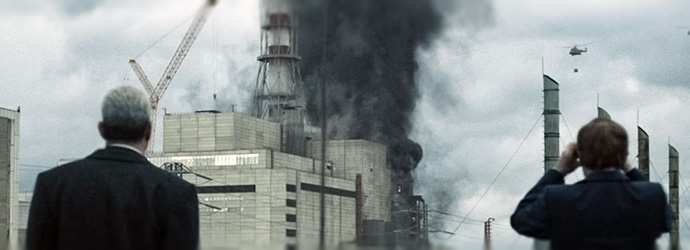
HBO’s powerful drama depicts the Chernobyl disaster as a universal human tragedy that transcends borders, nationalities and political systems. While creative liberties were taken in the name of plot and pacing, they do not take away from the impact and scale of the actual events depicted on screen or the major themes of the series.
Be warned the following contains spoilers throughout.
Those who fought the radiation
The first episode in the series opens two years after the Chernobyl accident as Valery Legasov, the leading scientist of the Chernobyl commission, records the last in a series of tapes reflecting on the causes of the nuclear disaster. One of the first establishing shots of Legasov’s flat lingers on a vintage electricity dial meter counting kilowatt-hours which sets energy generation and policy as the foundational issues for this show.
HBO’s depiction of the Chernobyl disaster chooses to focus on a handful of characters who represent the hundreds of thousands of people who put everything on the line to keep the disaster from developing into something much worse.
Vasily Ignatenko
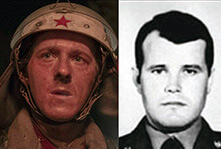
Ignatenko was one of the firemen who were first on the scene to fight the flames in and around the stricken reactor 4 building. It is estimated that he absorbed 1600 roentgen, a deadly radioactive dose which killed him two weeks later, at the age of 25. The series does not shy away from showing the agonizing symptoms of severe radiation poisoning.
While Ignatenko and his colleagues tackled the radioactive blaze with woefully inadequate equipment, their sacrifice ensured that the fire did not spread to the other three reactors which would have exponentially escalated the release of radiation.
Ignatenko’s story is based on first-hand accounts from his widow, Lyudmila, who is also a key character in the series, as recorded by Belarusian journalist Svetlana Alexievich in Voices from Chernobyl.
Valery Legasov
Legasov, as portrayed by Jared Harris, is the scientist leading the disaster response to initially extinguish the relentless nuclear fire raging in the bowels of reactor 4 and then to contain the spread of radiation threatening to heavily contaminate most of the Soviet Baltic states and Eastern Europe. From the outset, he is shown to be committed to seeking the truth, frustrated by those higher up in the hierarchy turning a blind eye to the gravity of the crisis.
[Chernobyl was] an event on a planetary scale [...] like the eruption of famous volcanoes or the deaths of people in Pompeii
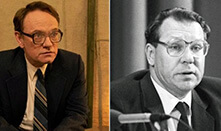
As the series progresses, he is shown to become increasingly disillusioned with the government’s wider response and reticence to implement the necessary modifications to make other reactors across the USSR safer. In the TV series, he sacrifices his career during a show trial to highlight a critical design flaw that had been covered up. The graphite-tipped boron control rods and the emergency shutdown procedures that were supposed to safely shut down the majority of Soviet reactors actually had the opposite effect. While Legasov did not make that dramatic courtroom intervention in real life, there are some parallels with what actually happened.
He [Legasov] was broken by the system and those that guarded it
Legasov hung himself two years after the Chernobyl disaster and this is where the TV show picks up. While he did record his thoughts about Chernobyl on cassette tapes, most of the dialogue from the opening scene is fictional. In real life, Legasov was a consistent and vocal advocate for improving safety measures, both long before and after the accident. This put him at odds with powerful segments of the Soviet scientific and industrial establishment and potentially with Gorbachev himself, the general secretary of the USSR.
Boris Shcherbina
Shcherbina played by Stellan Skarsgard, was a deputy chairman charged by Gorbachev to report on the situation at Chernobyl. In the HBO show, Skarsgard’s portrayal of Shcherbina starts off as sceptical and resentful of Legasov’s scientific zeal but he quickly grasps the enormity of the disaster. He begins to work closely alongside Legasov and a strong but understated friendship based on professional respect and extraordinary circumstances blossoms on screen and is elegantly acknowledged by a few lines of dialogue in the final episode.
Of all the ministers, and all the deputies...the whole congregation of fools...they mistakenly sent the one good man. For God's Sake, Boris, you were the one who mattered most.
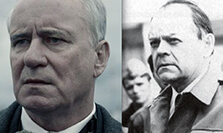
Shcherbina was a senior government official, who had climbed through the ranks of the Soviet hierarchy, by the time Chernobyl occurred. Once there, he immediately marshals the forces of Soviet infrastructure: men, materials and equipment to battle the spread of radioactive contamination.
Along with Legasov and thousands of men and women, Shcherbina received an above-average dose of radiation that cut his life short, dying in 1990, at age 70.
Ulana Khomyuk
Khomyuk, the tireless nuclear physicist who searches for the causes of Chernobyl, never existed in real life. Series creator, Craig Mazin, stated that she is a fictional character representing soviet scientists who put their reputations on the line to raise the alarm on the serious flaws plaguing RBMK reactors. Emily Watson was cast to represent the large numbers of soviet women who worked in science and medicine, far outstripping similar gender metrics in the West.
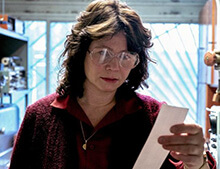
While in real life, knowledge of design flaws in soviet reactor types was fairly widespread throughout the relevant scientific communities, the male-dominated scientific leadership of the time was very much motivated by self-preservation preventing meaningful disclosures from taking place that could have prevented the disaster. Therefore while Ulana’s character arc is fictional and dramatized, her struggle to make the reactor flaws and dangers of radiation exposure known represents the general atmosphere of the time.
General Vladimir Pikalov
Pikalov, a Soviet general who led military units specialised in chemical warfare, was a World War II veteran who fought and was wounded in the infamous battles of Moscow, Stalingrad and Kursk. In the TV show, he is shown as heroically volunteering to drive a modified truck close to the exposed reactor to get accurate radiation figures.
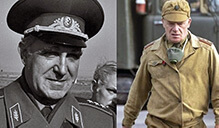
This lines up with real-life accounts placing him as one of the first people on the ground, who took necessary readings to get started with decontamination efforts. During his time at Chernobyl, he was exposed to significant amounts of radiation leading to partial blindness. For his actions during the Chernobyl disaster, he was awarded the highest honours in the USSR: the Order of Lenin and the title of Hero of the Soviet Union.
Pikalov passed away in 2003, at the age of 80. While this is not covered in the HBO series, Pikalov most likely had a heavy hand in the development of Novichok, the chemical weapon used by alleged covert Russian agents in the Skripal attacks in Salisbury.
The human factor of Chernobyl
In the aftermath of Chernobyl, the Soviet leadership was keen to pin the blame solely on human error and mismanagement. The primary reason was to protect the USSR from costly lawsuits and sanctions that could have been lodged by neighbouring western countries beyond the iron curtain affected by the Chernobyl meltdown.
In order to achieve this, the Soviet leadership first sent Legasov to meet with western nuclear scientists in Vienna and address their concerns with a modicum of honesty. Secondly, there was a show trial that took place a little over a year later. The plant director, chief engineer and deputy chief engineer were primarily blamed for the accident.
Anatoly Dyatlov
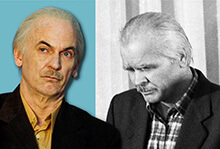
Dyatlov was present in the control room during the accident. He was overseeing the operators carrying out the safety test that caused the accident. In the HBO series, he is portrayed as unflinchingly dictatorial, constantly berating and overruling the serious concerns control room operators were voicing during the procedure that led to the unspeakable catastrophe. The bottom line is that he was complicit in the fateful sequence of decisions that led to the reactor explosion.
One aspect that the show does not cover due to pacing issues, according to creator Craig Mazin, is Dyatlov’s background which could have put his personality in a richer context. In the climactic control room scenes, Dyatlov threatens a junior engineer and mentions his twenty-plus years of experience in the nuclear field.
Dyatlov was appointed to a senior technical role at Chernobyl because of his significant experience installing nuclear reactors in submarines. During that job, he was exposed to 200 rems of radiation due to a reactor fuelling accident. There are reports that he subsequently left the infirmary early and could have potentially contaminated his son who later died of leukaemia.
In addition to those 200 rems, Dyatlov received almost 400 rems during the Chernobyl accident. There are some contemporary accounts that present Dyatlov as a man consumed by anger and unprocessed guilt manifesting itself as a relentless drive to tame the atom at all costs. However, HBO’s Chernobyl avoids assigning a psychological motive to his actions and personality.
Dyatlov maintained his innocence until his death in 1995, pointing the finger solely at the reactor design flaws. While the TV series acknowledges that the AZ-5 emergency shutdown button perversely acted as a detonator due to the graphite tips on the control rods, it also blames Dyatlov for his willingness to flout safety procedures and push the reactor right up to its maximum theoretical envelope necessitating the AZ-5 button to be pressed in the first place. The series highlights that he insisted on restarting the reactor once it had stalled without the mandated 24-hour moratorium. However, such brazen disregard for precautions did not exist in a vacuum.
Viktor Bryukhanov
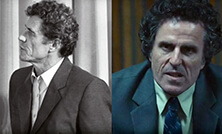
He was the plant manager at the time of the accident. In the HBO series, he is presented as a much put-upon bureaucrat who is eagerly eyeing potential promotions within the soviet nuclear industry. The final episode, Vichnaya Pamyat (which means memory eternal), turns back the clock to twelve hours before the event when Bryukhanov is forced by electricity grid officials to delay the scheduled safety test which had been assigned to the reactor core’s day shift crew. Instead, due to factories working overtime to meet quotas, Chernobyl had to continue producing higher than planned levels of electricity for an extra ten hours, meaning the test would have to be carried out by an inexperienced night shift contingent.
In the show, Viktor does not challenge the power level directive on account of it coming from on high in the Communist Party structure and people’s livelihoods being at stake. In reality, there are reports that Bryukhanov was more assertive than his onscreen counterpart. Notably, it seems that when the Chernobyl plant was being designed he opposed the installation of RBMK reactors and recommended that PWR-type reactors, a competing western design, be installed because of its lower radioactive emissions. In the end, this mattered little: Chernobyl was built with the RBMK type and he was sentenced to ten years in a labour camp along with Dyatlov and Fomin.
Nikolai Fomin
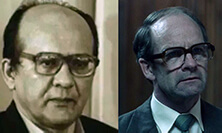
Fomin, an electrician by trade, was the chief engineer at the Chernobyl plant in spite of having no demonstrable nuclear power training. His potential unsuitability for the position is heavily hinted at whenever he appears on-screen, although just like Bryukhanov he is shown as being motivated by status. He often defers to Dyatlov, on technical matters, who is his subordinate. He is also belittled in the meeting where Bryukhanov announces the test delay. In real life, Fomin was psychologically affected by the accident, attempting suicide several times and suffering from a mental breakdown that led to his early release from prison.
The lies we keep telling ourselves
HBO’s Chernobyl series is a dramatised retelling of the frighteningly real events surrounding the Chernobyl catastrophe involving depictions of real people at the epicentre of the tragic episode. Writer and creator Craig Mazin wrote the show around one central question: What is the cost of lies?
While this question, uttered and reformulated by Jared Harris’ portrayal of Legasov, may seem on the nose, it is not the pointed critique of the Soviet authorities and their obsession with secrecy over safety as some commentators shortsightedly interpret it. Chernobyl is conceptually bigger than that. The question applies globally to all human power structures that reach a critical mass whenever facts get in the way of convenience or the business-as-usual attitudes that perpetuate and justify their authority and methods.
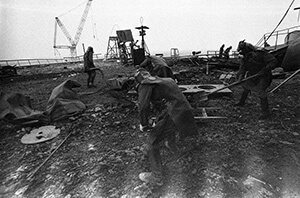
In this sense, HBO’s Chernobyl is closer to a Shakesperian play staged in a specific setting or style to highlight certain themes inherent to the story and characters. Chernobyl happens to be set in Chernobyl because of its notoriety but its universal story could be adapted to Fukushima, Windscale, Bhopal, Three Mile Island and even at the Kennedy Space Center during the Challenger launch.
The names and faces would differ but most of the characters would play similar roles within the strictures of tragedy. The familiar story beats involving overconfidence, arrogance, pettiness, ignorance, fear and self-interest would once more require the suffering and sacrifice born out of a banal sequence of events spiralling out of control. Yet it is these latter positive attributes that end up being given a grander heroic meaning after the fact, by the very same institutions washing themselves of responsibility.
A memorial in honour of those who fought the Battle of Chernobyl against an invisible enemy has an inscription that reads “To Those Who Saved the World”. Another line of dialogue from the show seems to echo an apt response: “Every lie we tell incurs a debt to the truth. Sooner or later, the debt is paid.”
Has the Chernobyl disaster taught us anything?
The resounding answer is no. In terms of nuclear energy, there have been incidents and accidents running through the whole spectrum of gravity in Russia, Europe, Japan and the United States. Let’s not forget that the Fukushima meltdown in 2011 was given the same classification and its release of certain radioactive elements rivalled Chernobyl too.
With Fukushima, an all-too-recognisable trifecta of self-interest, cost-cutting and political expediency led to plant management ignoring successive reports stating, in no uncertain terms, that the plant was built too close to sea level and that tsunami defences were inadequate.
It seems obvious really, nuclear power plants cannot be designed to account for the human factor, not to be confused with mere human error. This is the core design flaw that all nuclear reactors have and it leads to incidents, accidents and disasters often beyond the scope of the institutions that are responsible for them. So why do a majority of countries around the world persist with building new nuclear power plants? In short, cowardice, myopic thinking and craven self-interest.
Most national electricity grids are designed around the concept of utility-scale power plants churning out large amounts of energy to meet demand immediately from one end of the country to the other. Renewable energy does not fit neatly in this type of energy infrastructure policy. Even though technological solutions already exist to enable distributed storage, peer-to-peer electricity trading and self-generation, what’s lacking is the courage and commitment to implement them.
How to avoid funding nuclear power in the UK?You can read up on nuclear energy in the UK, reach out to anti-nuclear groups and make the switch to a supplier that doesn't buy energy from nuclear power stations.
